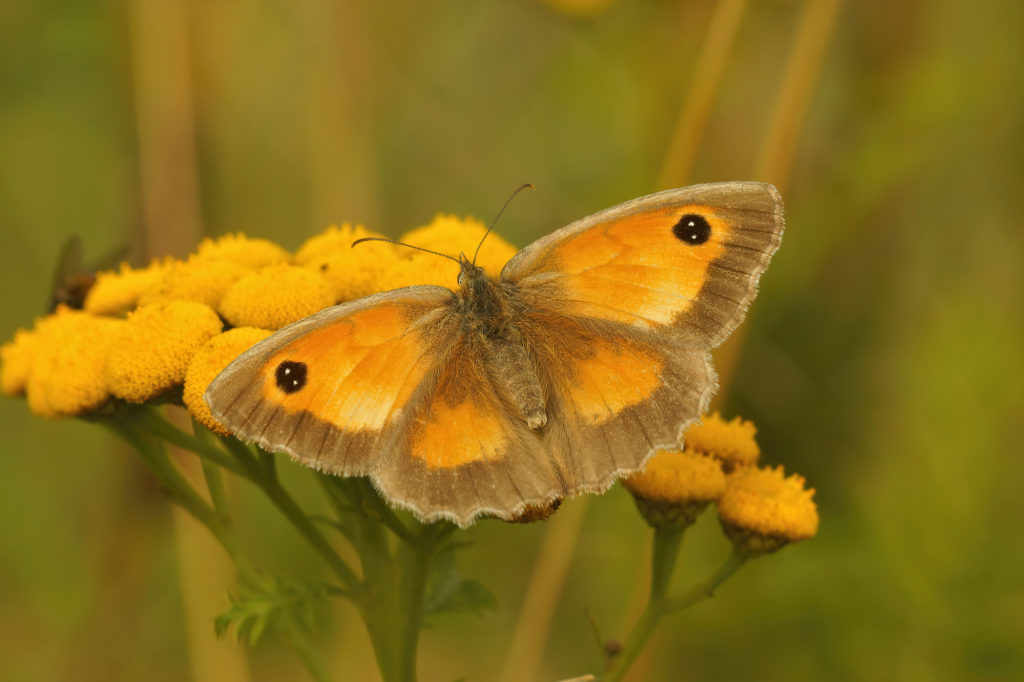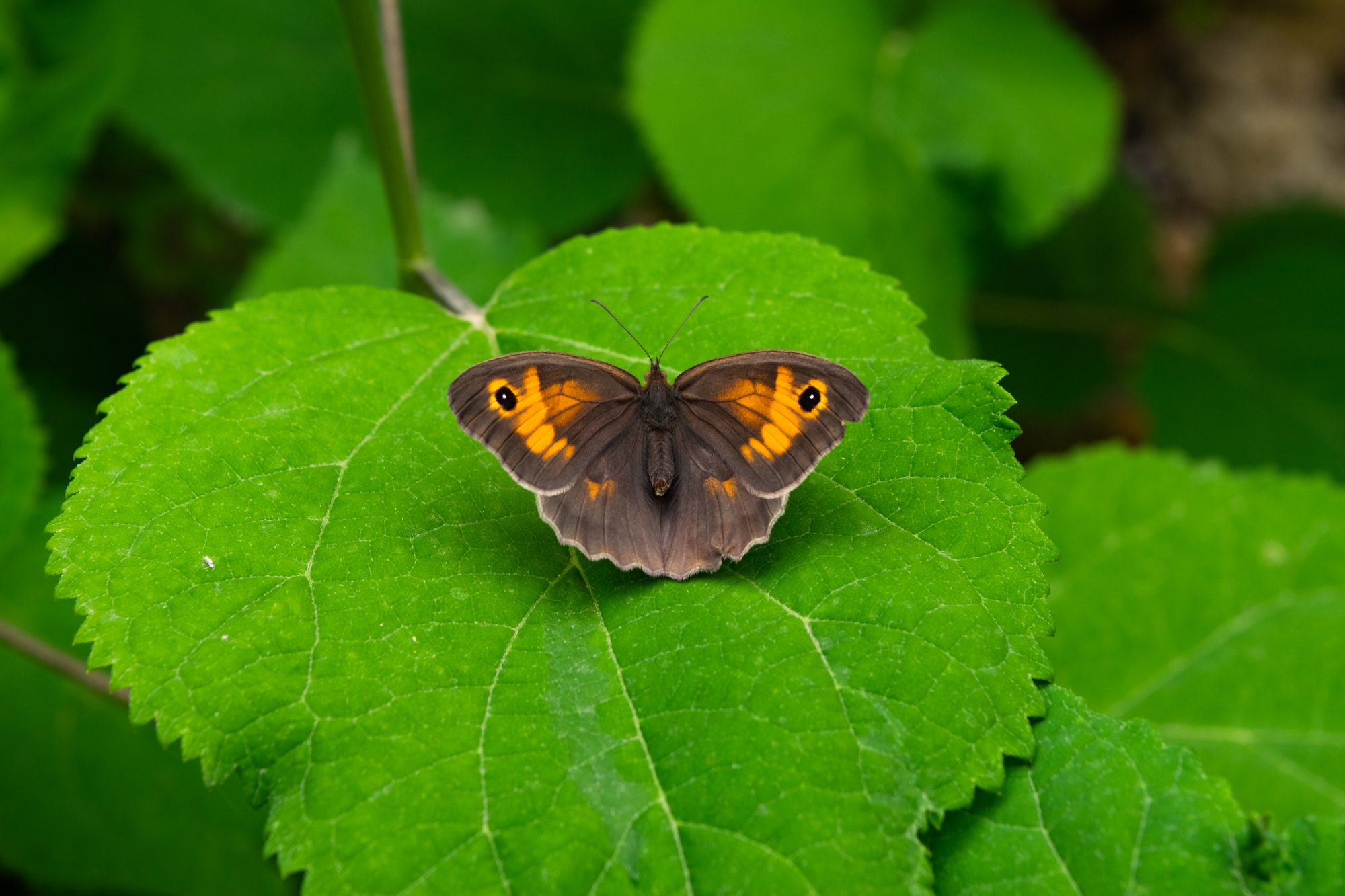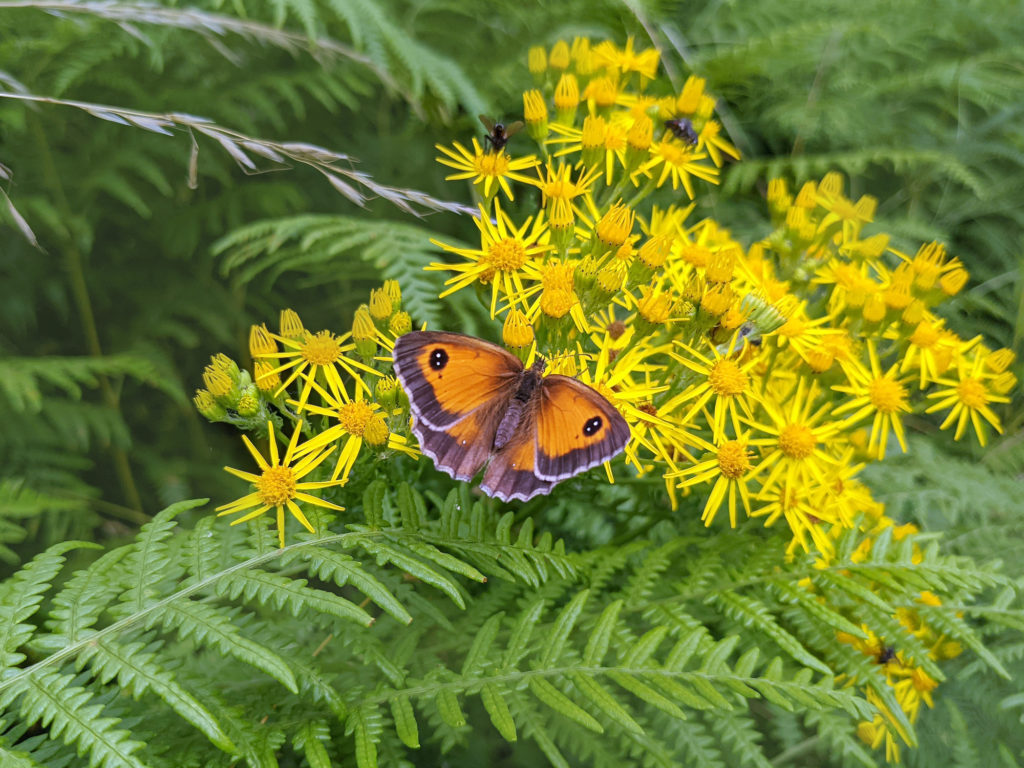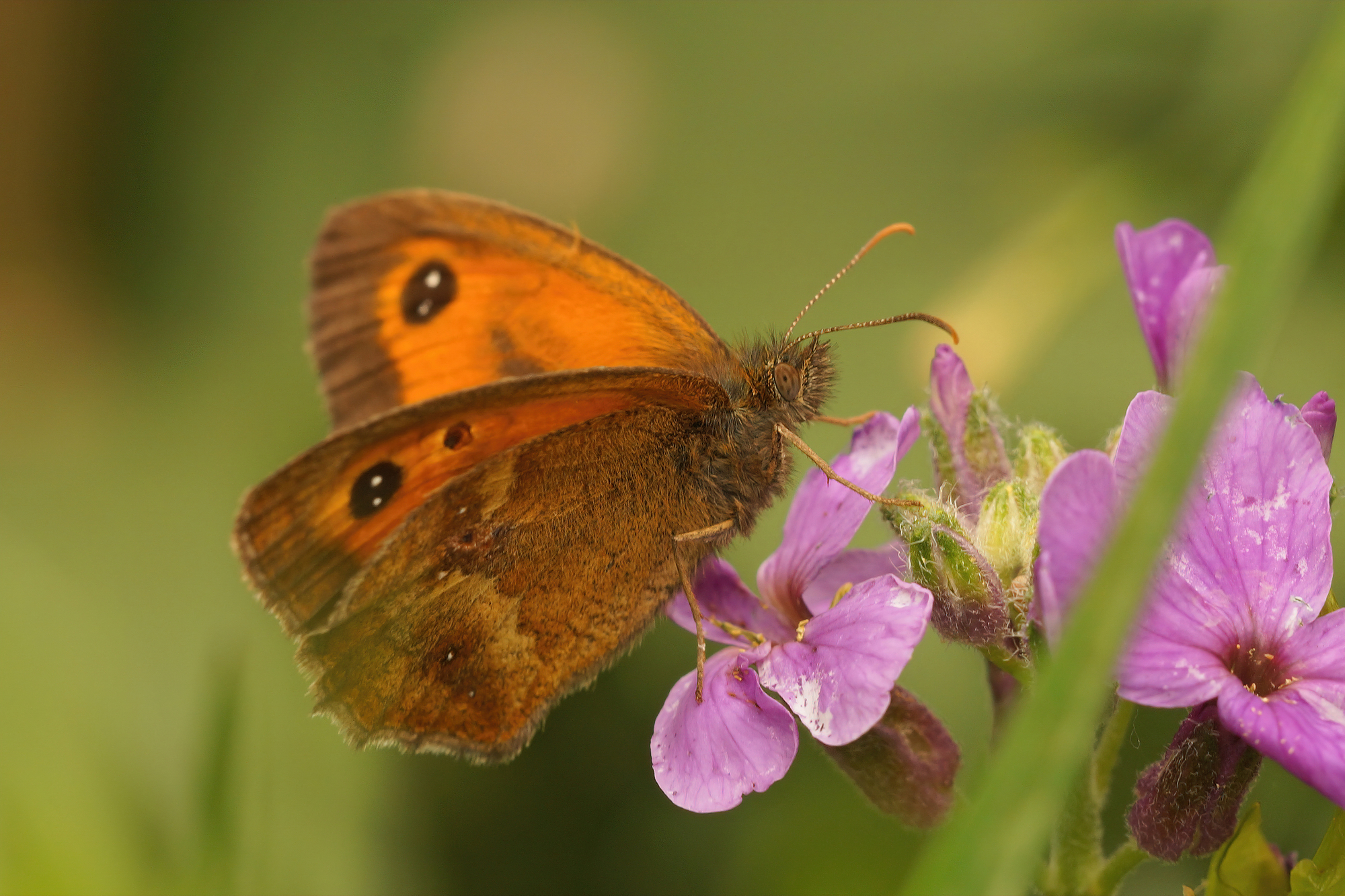The gatekeeper (pyronia tithonus), also known as the hedge brown, is a member of the genus Pyronia and the family Nymphalidae.
It is one of the most common of British butterflies and is thought to be most closely related to the red admiral and, like it, it flies in summer and is particularly fond of sun-drenched meadows.
The gatekeeper butterfly was named after Thomas Gateley, one of the most famous collectors of insects in Victorian times.
How To Identify
This butterfly is easily distinguished by the orange and brown wings and black eye spot on each of the upper wings. These black dots also have two tiny white dots inside them.
They have a wingspan of approximately four centimetres and a body length of two centimetres.
Male and female gatekeepers are easily distinguished; only the male has the distinctive sex brands on the forewings.
Gatekeeper larvae can either be light brown or sometimes green.

Typical Behaviour
During the day, it likes to stay in the shade of hedgerows and ditches. When at rest on a stalk of grass, the butterfly spends its time basking with its wings open as if on display as a form of camouflage. When disturbed, they often jump from danger by flapping their wings rapidly back and forth to scare off whatever threat is threatening them quickly and then they fly away or sometimes even hide in cracks and crevices in the ground.
What Is The Difference Between a Gatekeeper And a Meadow Brown?
Gatekeeper butterflies can easily be mistaken for meadow browns (Maniola jurtina), though some key differences exist between the two similar species.
Firstly, the meadow brown butterfly is mostly brown with very little orange on its wings, whereas the gatekeeper butterfly’s wings are mostly orange with little brown.
Secondly, the meadow brown also has one small white dot inside the black eye spots, whereas the gatekeeper has two white dots.

What Do Gatekeeper Butterflies Eat?
The gatekeeper butterfly feeds on flowers that contain cardiac glycosides, bitter compounds which act as anti-predator devices. Some of its favourite nectar sources are wild marjoram, ragwort, and bramble.
The gatekeeper caterpillar (larvae) feed on various members of the daisy family, including common knapweed (Centaurea nigra), white dead-nettle (Lamium album) and long-tailed clover (Trifolium campestre). They also love feeding on tender young leaves of various grasses such as fescues (Festuca spp) and meadow-grasses (Poa spp).

Where Do Gatekeeper Butterflies Live?
The gatekeeper butterfly is especially widespread in Southern Britain but can be found in various habitats throughout most of England, though it is less common in Scotland.
Its preferred habitat is the sunny border between rough grassland and woodland edges or hedgerow. It can sometimes be seen sunning itself on patches of bare ground which have been warmed by earlier sunlight, where it will rest with its wings fully spread out at right angles to its body.
Are Gatekeeper Butterflies Rare?
No, it is fairly widespread throughout the UK, and there is no real conservation concern or threats to its survival.

How Does The Gatekeeper Defend Itself?
The gatekeeper’s main defence mechanism is its colouring, which is thought to be aposematic. The bright colours of its wings warn predators that it is unpalatable, so they probably won’t bother trying to eat it. Additionally, the wing spots look like eyes which often fool predators and scare them away.
How Long Does The Gatekeeper Live?
The gatekeeper butterfly’s lifespan (flight period) is relatively short, with adults emerging during the late summer period. You’ll typically see the butterfly around early July, and by early August, there’ll only be a few adults remaining.
Sources and References
- Gatekeeper Pyronia Tithonus – butterfly-conservation.org
- On Watch With The Gatekeeper Butterfly – theguardian.com
Sam loves to learn about animals and their habitats. He has been a nature lover from a very young age, and has been writing papers and articles about wildlife for as long as he can remember.
